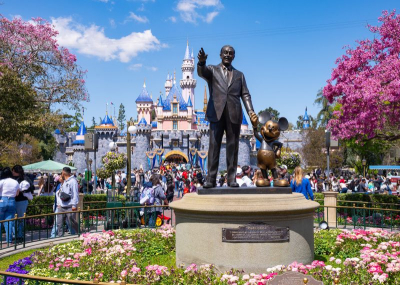Examining the Risks and Responsibilities Following an Employee Injury in a Giraffe Enclosure
In the tranquil confines of a local zoo, an unexpected incident brought to light the inherent dangers lurking within the seemingly serene world of exotic animal care. Amidst the towering grace of giraffes, an employee found themselves in a precarious situation, underscoring the critical need for stringent safety protocols and comprehensive training in zoological environments.
As a seasoned journalist with a decade of experience, I delve into the complexities surrounding this incident, shedding light on the broader issues of occupational safety and the unique challenges posed by working alongside majestic creatures.
The incident unfolded during a routine maintenance task within the giraffe enclosure, highlighting the unpredictable nature of working closely with animals in captivity. Details surrounding the circumstances leading to the employee's injury remain shrouded in ambiguity, raising pertinent questions regarding supervision protocols, equipment standards, and staff training.
Navigating Occupational Hazards
The realm of zoological conservation presents a myriad of occupational hazards, ranging from physical injuries to potential zoonotic diseases. While stringent safety measures are often in place, the dynamic nature of animal behavior necessitates constant vigilance and adaptability on the part of zoo personnel.
Legal and Ethical Considerations
In the aftermath of such incidents, legal ramifications and ethical considerations come to the fore, prompting a reassessment of organizational liability and duty of care. As custodians of wildlife, zoos bear a profound responsibility not only towards their animal inhabitants but also towards the safety and well-being of their human workforce.
Mitigating Risks Through Education and Training
Central to fostering a culture of safety within zoological facilities is the implementation of robust education and training programs. Equipping employees with the requisite knowledge and skills not only enhances their ability to mitigate risks but also instills a deeper understanding of animal behavior and welfare.
Collaborative Efforts Towards Improvement
The onus of ensuring safety within zoological environments extends beyond individual institutions, necessitating collaboration between industry stakeholders, regulatory bodies, and academic institutions. By sharing best practices, fostering research initiatives, and engaging in open dialogue, strides can be made towards continuous improvement in occupational safety standards.
As we reflect on the incident within the giraffe enclosure, it serves as a sobering reminder of the inherent risks intertwined with the noble pursuit of wildlife conservation. By acknowledging these risks, implementing proactive measures, and fostering a culture of accountability, we can endeavor to create safer environments for both humans and animals alike.
In the ever-evolving landscape of zoological conservation, the quest for safety is an ongoing journey—one that requires unwavering dedication, collective effort, and a steadfast commitment to learning from past experiences. Only through such concerted endeavors can we ensure that tragedies serve not as endpoints, but as catalysts for positive change and progress.
Conclusions: Towards a Safer Future
The incident within the giraffe enclosure underscores the imperative for continuous improvement in occupational safety within zoological facilities. By recognizing the inherent risks and complexities of working alongside exotic animals, institutions can take proactive steps to mitigate hazards and safeguard their employees.
Key conclusions drawn from this examination include:
Importance of Robust Safety Protocols: Zoos must prioritize the development and enforcement of comprehensive safety protocols tailored to the unique challenges of animal care environments. Regular risk assessments, stringent equipment standards, and effective emergency response plans are essential components of such protocols.
Investment in Education and Training: Equipping zoo personnel with the requisite knowledge and skills is paramount to fostering a culture of safety. Ongoing education and training programs should cover not only occupational hazards but also animal behavior, welfare, and communication techniques.
Collaborative Approach to Safety: Addressing occupational safety concerns necessitates collaboration between industry stakeholders, regulatory bodies, and academic institutions. By sharing insights, conducting research, and establishing industry-wide standards, the collective effort can drive meaningful progress towards safer working environments.
Legal and Ethical Accountability: Zoological institutions bear a dual responsibility towards both their animal inhabitants and human workforce. Adherence to legal regulations, ethical guidelines, and organizational policies is crucial in upholding duty of care and minimizing risk.
Continual Learning and Adaptation: The pursuit of safety in zoological conservation is an ongoing journey characterized by continual learning and adaptation. By leveraging past experiences, embracing innovation, and fostering a culture of accountability, institutions can strive towards a safer future for all stakeholders.
In conclusion, the incident serves as a poignant reminder of the inherent complexities and risks associated with caring for exotic animals. However, by embracing proactive measures, fostering collaboration, and prioritizing safety at every level, zoological institutions can pave the way for a future where both humans and animals thrive in harmonious coexistence.











![Unmatched Excellence: 30 Years, Zero Lost Bags - The Remarkable Record of [Airport's Name]](/media/k2/items/cache/11d1150d71d7fad2b9b66fe40cd35dcb_M.jpg)